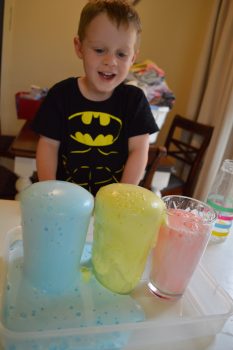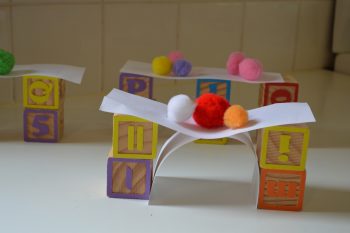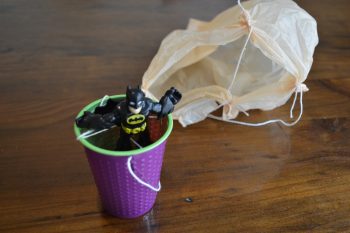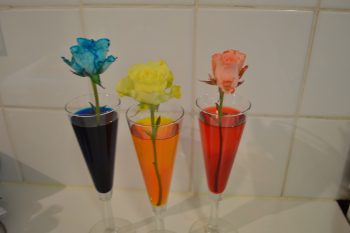It’s the buzzword of the decade…but STEM learning is more than just that… The acronym (standing for Science, Technology, Engineering and Maths) is used to describe a way of thinking in a more connected and holistic way and encouraging knowledge across disciplines.
It is never too young to start teaching STEM to young children. In fact, pre-schoolers are naturally inclined to undertake STEM activities without us even realising it (!) as they process the world around them through questioning, observing and communicating. This early exposure to STEM is shown to develop critical thinking and reasoning skills, and helps support overall academic growth.
But how can we encourage those naturally inquisitive young minds to engage in STEM activities in a hands-on and fun manner?
To help you out, I have compiled 5 STEM play ideas for pre-schoolers and early-primary years’ students from my book Real Kids, Real Play using simple household items.
- Volcanoes
Our all-time favourite experiment. Find some baking soda and vinegar around the house and create a volcano. You can make it even more exciting by adding a drop of dishwashing liquid and food colouring to the baking soda before pouring over the vinegar to ensure a very ‘foamy’ reaction.

- Straw Rockets
Wrap a piece of paper into a tube around the top of a straw and secure it loosely with tape. Scrunch the end of the tube into a tip. Cut out 2 rocket shapes and stick them either side of the tube and you are ready to launch!
Blow into the straw and see how far you can blow the rocket across the room. This introduces children to the concept of propulsion and it can also become a really fun competition.

- Bridges
Simply find some blocks to use as columns and paper as a deck, and test out different bridge configurations to determine which can carry the most load (i.e. cotton wool balls).

- Ballooning
Attach a nappy bag to a cup via 4 lengths of string. Drop it from a high place and watch it float to the ground.
Test it again with something in it and a third time when you don’t have a ‘parachute’. What happens?

- Flower Food
Teach kids the basics of how plants receive their nutrients by placing a cut white flower or celery into a glass of water coloured with food dye. Very quickly the petals will change in colour, demonstrating that plants do, in fact, receive their nutrients through their stems.

Finally, remember that in whatever activity your child engages in be sure to encourage inquiry and discovery by asking questions such as ‘what do you think would happen if we…’, or ‘why do you think that happened’.
Happy playing!
You may also like to read:
Why is STEM Education so important for children?









